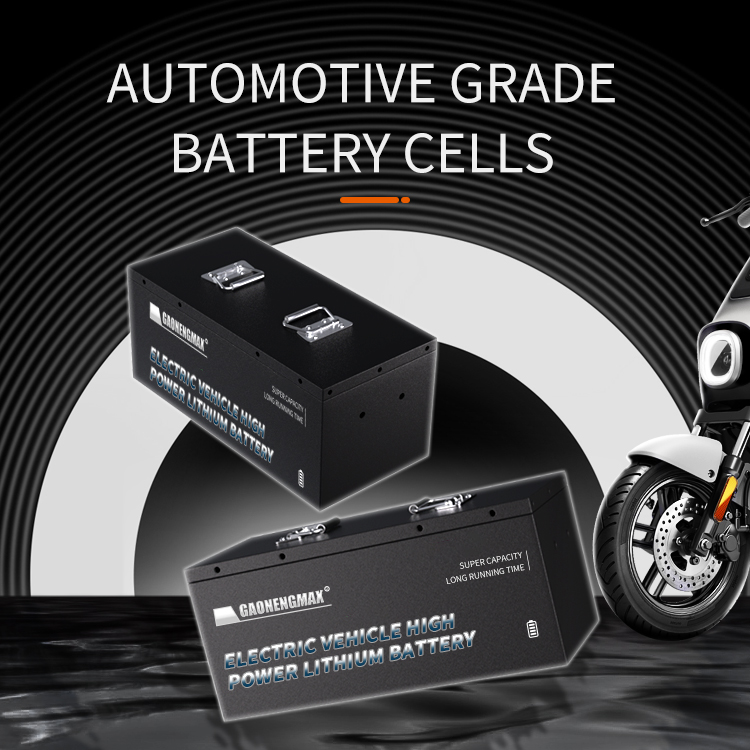

1. Ternary polymer lithium ion battery
Ternary polymer lithium ion battery refers to the lithium ion battery whose cathode material is lithium nickel cobalt manganate (Li (NiCoMn) O2) ternary cathode material and uses gel polymer electrolyte. As the transmission medium of ion movement, electrolyte is generally composed of solvent and lithium salt. The electrolyte of lithium secondary battery mainly includes liquid electrolyte, ionic liquid electrolyte, solid polymer electrolyte and gel polymer electrolyte. The greatest advantage of the membrane is its high mechanical strength and large surface area. The thinner the film, the higher the energy density, because more active substances can be embedded in the battery.
2. Ternary power lithium ion battery
The so-called power ternary lithium-ion battery means that the battery supports high rate and high current discharge, with high power density and more energy released per unit time. The rate discharge capacity refers to the capacity holding capacity of the battery when the charge discharge rate is increased. The rate of charge and discharge is expressed in xC. 1C means that the nominal capacity of the battery can be used up in 1h, while the rate of discharge at 2C can be used for 30min.
For ternary power lithium-ion battery, Panasonic Corporation of Japan has the most research and the most mature technology at present. In the experimental stage, 30C discharge can be achieved. Among them, the power 18650 ternary lithium-ion battery, which has successfully achieved large-scale commercial production, has a discharge rate of 12C and a capacity of 3300mAh.
3. Ternary low temperature lithium ion battery
The low temperature characteristics of lithium ion batteries are mainly investigated from the low temperature discharge characteristics and cycle life. The most important thing for low temperature batteries is to maintain the fluidity of materials under low temperature conditions, so that lithium ions can freely shuttle between the positive and negative electrodes, and achieve battery charging and discharging. At present, domestic and foreign manufacturers of ternary lithium-ion batteries can basically achieve a discharge temperature of - 20 ° C, and the discharge capacity is more than 50%, and the cycle life is about 400 times, which can fully meet the requirements of ordinary electrical appliances and scenarios. However, in special aerospace, special equipment and other special products, or in the north, high mountains and other cold environments, lithium ion batteries must be able to achieve a lower discharge operating temperature to meet harsh operating conditions.

Popular recommendation
1.5v Carbon battery!Nokia's new technology may double phone battery life
2023-10-08Ni-MH battery packs.Circuit to eliminate the memory effect of nickel-cadmium batteries
2023-10-093V Button battery.Samsung develops graphene battery technology that charges 5 times faster
2023-10-08aa battery!Ionity has built 101 ultra-fast charging piles with a power of 350 kilowatts
2023-10-0818650 battery pack 3.7v.How to protect lithium-ion batteries in mobile phone fast charging technolog
2023-10-08CR2354 battery.Rookie in the energy industry---methanol fuel
2023-10-08LR41 battery.Power lithium batteries: innovation capabilities and safety research are shortcomings
2023-10-14AG9 battery!Canadian scientists are developing quantum batteries that rely on quantum mechanics with
2023-10-08Nickel Hydride No. 5 batteries.Main technical parameters and uses of cr2016 button battery
2023-10-09AG10 battery.Zinc-manganese dry battery charger circuit
2023-10-09R03 Carbon battery!Lixin Energy Cheng Jun: The relationship between battery energy density, market,
2023-10-08aaa alkaline battery!Online double conversion UPS power supply working mode and technical status
2023-10-08